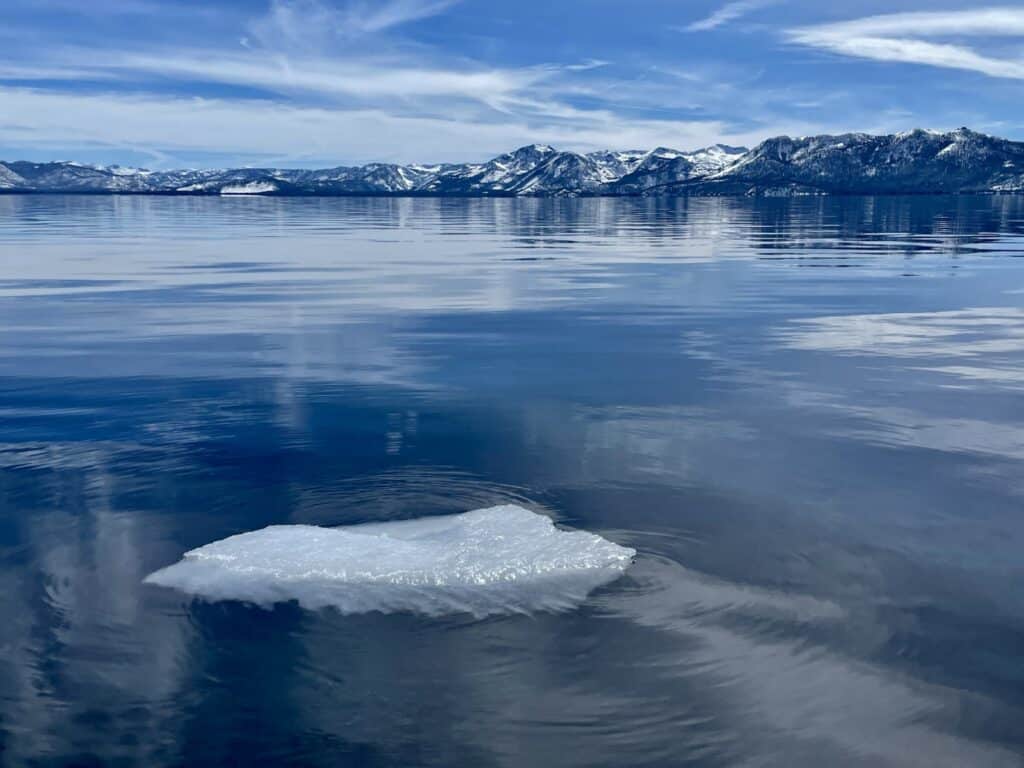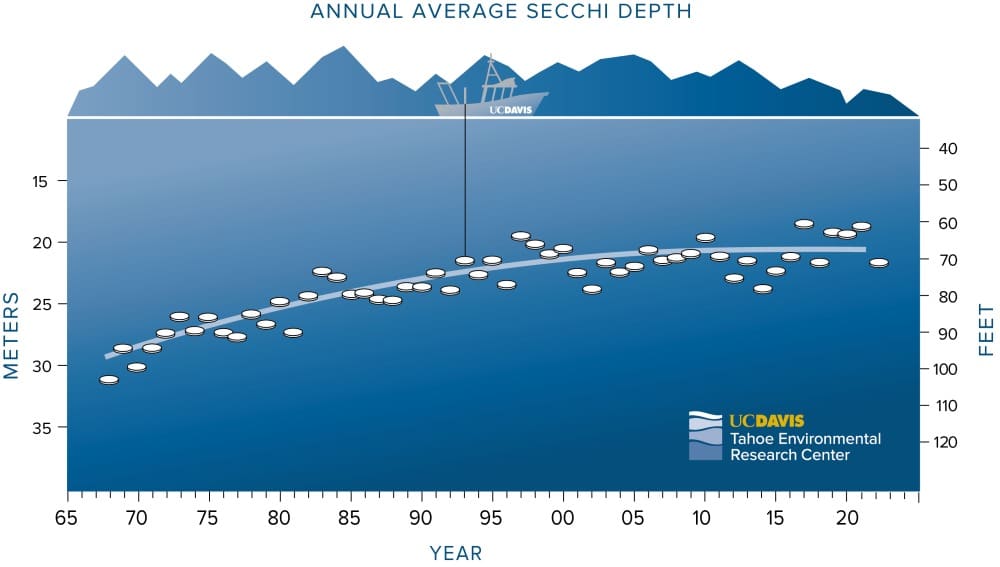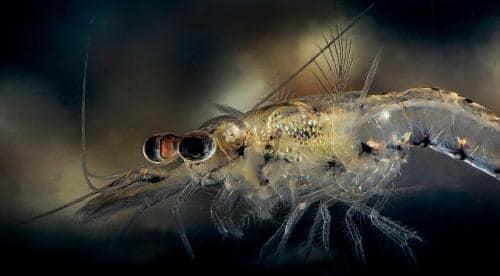
According to the Davis Tahoe Environmental Research Center ?TERC? from the University of California, for the last five months of 2022, Lake Tahoe was the clearest since the 1980s, thanks in large part to a resurgence of the lake's native zooplankton.
Researchers at the center emphasized that the process is still in its early stages and they expect clarity improvement to continue into 2023.

The main factors affecting lake clarity are the concentration of particles in a specific size range, such as silt and clay, and minute phytoplankton or algae. Cyclotella phytoplankton, a single-celled algae, occurs in this size range and has affected clarity in most years.

Zooplankton are small, microscopic animals. Some zooplankton, particularly Daphnia and Bosmina, are specialized to consume particles in that critical size range.
"Daphnia and bosmina largely disappeared from the lake after they were knocked down following the introduction of the Mysis shrimp in the 1960s," said Geoffrey Schladow, director of the UC Davis Tahoe Center for Environmental Research. "In late 2021, the Mysis population unexpectedly plummeted, and it took Daphnia and Bosmina 12 months to increase their numbers and begin their natural cleanup."
Other factors are known to influence clarity changes from year to year. These include the magnitude of the runoff, the heating of the lake surface, and the depth to which the lake mixed in the previous winter. The report examined all of these factors and concluded that only the change in the zooplankton community could explain the magnitude of the change this year.
Water clarity is measured as the depth at which a 10-inch white disk, called a Secchi disk, remains visible when submerged in water.
In 2022, Lake Tahoe's average annual clarity was 71.7 feet compared to 61 feet in 2021. The key finding for 2022 was the big improvement in lake clarity from August to December, when Secchi's average depth was 80.6 feet. This coincided with the highest numbers of the Daphnia and Bosmina zooplankton.
The states of California and Nevada, which share a border on Lake Tahoe, are actively working to restore the lake's clarity to its historic 97.4 feet.
"We expect the impact of Daphnia and Bosmina to grow through 2023, and clarity may return to 1970s levels, despite the large runoff expected from this year's record snowpack," the ship's captain said. TERC and Secchi disk observer, Brant Allen.
"These events support the hypothesis that we put forward several years ago that the food web is an important factor in controlling lake clarity," he added.
However, the assistance provided by Daphnia and Bosmina plankton may only be short-term, the center said in a statement.
In turn, mysis shrimp populations are expected to recover as they consume Daphnia and Bosmina, so that clarity returns to what has been seen in the last 20 years.

"Future management actions should explicitly seek to incorporate ways to control the Mysis population," said Geoffrey Schladow. "We have a short window of time to monitor the lake in the absence of Mysis and then track the impacts of its return on the clarity of the lake."
This would add to the strenuous efforts being made to keep fine particles and nutrients out of Lake Tahoe. Management agencies in the basin report that more than 500,000 pounds of fine sediments and other clarity-damaging contaminants are kept out of the lake each year through erosion control and road maintenance projects.
TERC scientists are currently monitoring zooplankton communities through donor funding. They are also working with local fishing guides to monitor changes in the fish. Kokanee salmon, for example, are expected to be larger by 2023, as daphnia are their preferred food source.
You may be interested in: Is the child care crisis escalating?


